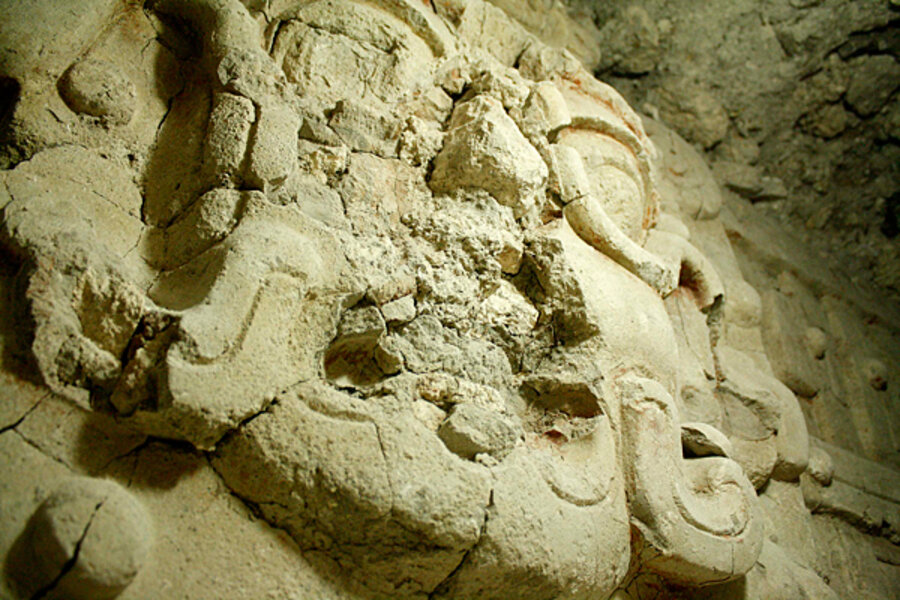Ancient finger bowls found in Mayan tomb (bowls filled with fingers, that is)
Loading...
A well-preserved tomb believed to be the final resting place of an ancient Mayan king has been discovered in Guatemala, scientists announced last week.
The 1,600-year-old tomb was discovered on May 29 beneath the El Diablo pyramid in the city of El Zotz. It is packed with of carvings, ceramics, textiles, and the bones of six children, who might have been sacrificed at the time of the king's death.
However, much more work is needed before the scientists can piece together all the clues about the tomb's owner.
"We still have a great deal of work to do," said Stephen Houston an archaeologist at Brown University in Rhode Island. "We've only been out of the field for a few weeks, and we're still catching our breath after a very difficult, technical excavation. Royal tombs are hugely dense with information and require years of study to understand."
Tomb discovery
Before making the actual discovery, Houston said the team thought "something odd" was happening in the deposit where they were digging. They knew a small temple had been built in front of a sprawling structure dedicated to the sun god, an emblem of Maya rulership.
"When we sunk a pit into the small chamber of the temple, we hit almost immediately a series of 'caches' — blood-red bowls containing human fingers and teeth, all wrapped in some kind of organic substance that left an impression in the plaster. We then dug through layer after layer of flat stones, alternating with mud, which probably is what kept the tomb so intact and airtight."
Eventually the scientists unearthed the final layer to reveal a small hole.
They lowered a bare lightbulb into the hole, and suddenly Houston saw "an explosion of color in all directions — reds, greens, yellows." It was a royal tomb filled with organics that Houston says he'd never seen before: pieces of wood, textiles, and thin layers of painted stucco.
"When we opened the tomb, I poked my head in and there was still, to my astonishment, a smell of putrification and a chill that went to my bones," Houston said. "The chamber had been so well sealed, for over 1600 years, that no air and little water had entered."
The tomb itself is about 6 feet high, 12 feet long, and four feet wide. "I can lie down comfortably in it," Houston said, "although I wouldn't want to stay there."
Royal burial
It appears the tomb held an adult male, but the bone analyst, Andrew Scherer, assistant professor of anthropology at Brown, has not yet confirmed the finding. So far, it seems likely that there are six children in the tomb, some with whole bodies and probably two solely with skulls.
And who was this man? Though the findings are still very new, the group thinks the tomb is likely from a king they only know about from other hieroglyphic texts. "These items are artistic riches, extraordinarily preserved from a key time in Maya history," Houston said. "From the tomb's position, time, richness, and repeated constructions atop the tomb, we believe this is very likely the founder of a dynasty."
Houston says the tomb shows that the ruler is going into the tomb as a ritual dancer. "He has all the attributes of this role, including many small 'bells' of shell with, probably, dog canines as clappers. There is a chance too, that his body, which rested on a raised bier that collapsed to the floor, had an elaborate headdress with small glyphs on them. One of his hands may have held a sacrificial blade."
The stone expert on site, Zachary Hruby, suspects the blade was used for cutting and grinding through bone or some other hard material. Its surface seems to be covered with red organic residue. Though the substance still needs to be tested, "it doesn't take too much imagination to think that this is blood," Houston said.
The findings were announced July 15 during a press conference in Guatemala City, hosted by the Ministry of Culture and Sports, which authorized the work.





